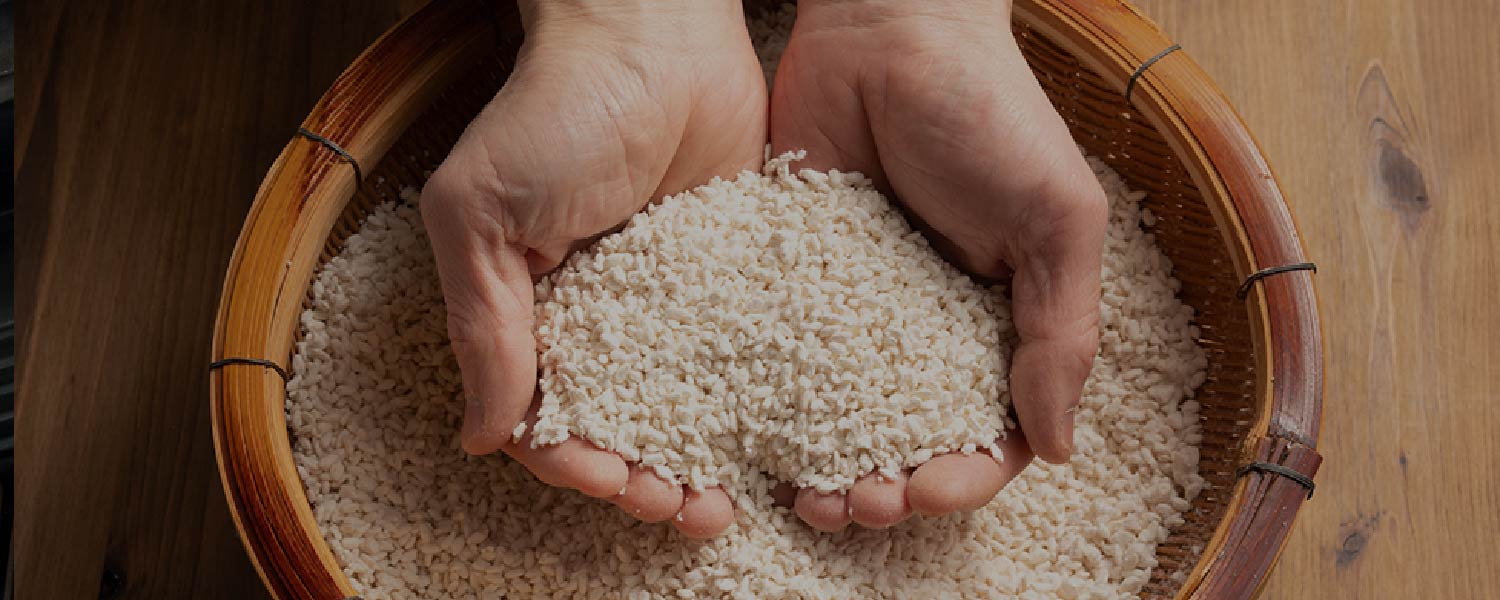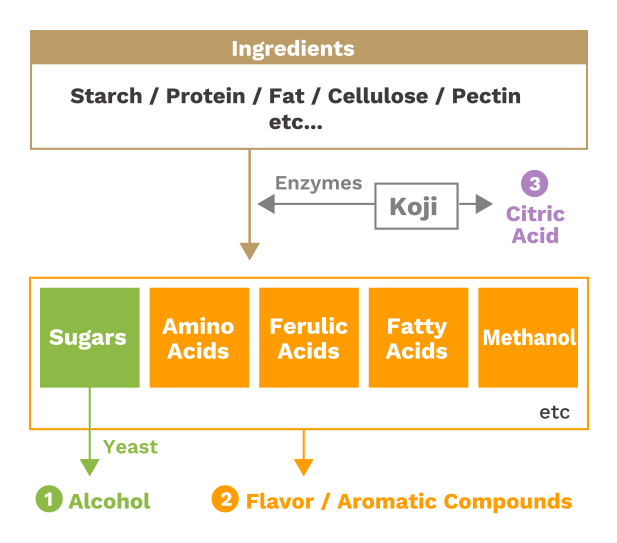Koji is an essential ingredient that is used in all types of shochu. Unlike the more specific types of koji used in sake, shochu making employs a wide variety of koji.
“Koji” refers to koji mold cultivated on rice or other raw ingredients. Koji used in shochu production is more diverse than ones used for sake due to wider varieties of koji molds and raw ingredients. Yellow koji mold is the main variety used for sake production. However, most shochu is produced with black or white koji mold, though yellow koji mold is used in some products. Similarly, koji used for sake is always made with rice. However, koji used for shochu can be made with rice, barley, sweet potatoes, and buckwheat etc.















